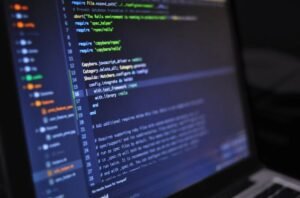Why Artificial Intelligence is the Future of Growth
Introduction
Artificial Intelligence (AI) has emerged as one of the most transformative technologies of our time. With its ability to process vast amounts of data and perform complex tasks, AI has the potential to revolutionize various industries and drive economic growth. This article explores why AI is the future of growth and explains how businesses can harness its power to gain a competitive edge.
Key Takeaways
- AI is a transformative technology that can revolutionize industries.
- AI enables businesses to gain a competitive edge.
The Power of AI
AI has the power to automate repetitive tasks, improve decision-making, and optimize operations. *Its ability to learn from data* and make predictions enables organizations to unlock new insights, streamline processes, and achieve greater efficiency. AI can also enhance customer experiences through personalized recommendations and responsive chatbots, ultimately driving business growth.
Transforming Industries
AI is transforming industries across the board. In healthcare, AI-powered algorithms can analyze medical records and generate insights for better diagnoses and personalized treatments. *This leads to improved patient outcomes and reduced healthcare costs*. AI is also revolutionizing manufacturing by enabling predictive maintenance, quality control, and autonomous robotics. In the financial sector, AI algorithms can analyze vast amounts of data to detect patterns and predict market trends, empowering traders and investors to make informed decisions.
The Future of Jobs
While AI brings automation to certain tasks, it also creates new job opportunities. As businesses adopt AI solutions, there is a growing demand for skilled professionals who can develop and manage AI systems. *These professionals will play a crucial role in ensuring the responsible and ethical use of AI*. Additionally, AI can augment human capabilities, enabling workers to focus on higher-value, creative, and strategic tasks. It is important for individuals to upskill and embrace the opportunities that AI-driven transformations present.
AI Challenges and Ethics
AI adoption is not without its challenges and ethical considerations. Issues such as privacy, bias, and job displacement need to be addressed. *Ensuring transparent and explainable AI models* and implementing strict data protection measures are important steps to mitigate risks. Ethical guidelines and regulations that govern the use of AI need to be developed to ensure the responsible deployment of this technology. Collaboration between businesses, government, and academia is essential to tackle these challenges effectively.
Driving Economic Growth
AI has the potential to drive economic growth by increasing productivity and innovation. According to research by Accenture, AI could double annual economic growth rates by 2035 for developed countries. Additionally, AI technologies have the power to unlock new business models and revenue streams. By harnessing the capabilities of AI, businesses can gain a competitive advantage, deliver better products and services, and expand into new markets. *The economic impact of AI is expected to be substantial and far-reaching*.
Tables
| Industry | AI Applications |
|---|---|
| Healthcare | Medical diagnosis, personalized treatment, drug discovery |
| Manufacturing | Predictive maintenance, quality control, autonomous robots |
| Finance | Market analysis, fraud detection, algorithmic trading |
| Year | Economic Impact |
|---|---|
| 2020 | $1.2 trillion |
| 2025 | $3.9 trillion |
| 2030 | $15.7 trillion |
| Year | New AI Jobs |
|---|---|
| 2020 | 1.7 million |
| 2025 | 5 million |
| 2030 | 12.3 million |
Embrace the Future
As AI continues to advance, businesses need to *embrace this technology* to stay competitive in the evolving digital landscape. Investing in AI research and development, fostering a culture of innovation, and collaborating with AI experts are essential steps for organizations to harness the full potential of AI. By leveraging AI’s power, businesses can drive growth, create new opportunities, and shape a prosperous future.

Common Misconceptions
Misconception 1: AI will replace human jobs completely
One common misconception about artificial intelligence (AI) is that it will completely replace human jobs. However, while AI automation may lead to changes in certain fields, it is unlikely to completely eliminate the need for human workers.
- AI is more likely to take over repetitive and mundane tasks, allowing humans to focus on higher-level thinking and creativity.
- Human involvement is crucial in areas that require emotional intelligence and critical decision-making.
- AI machines still require human supervision to ensure ethical decision-making and eliminate biases.
Misconception 2: AI is only beneficial for large corporations
Another misconception is that only large corporations can benefit from AI technology, leaving smaller businesses in the dust. However, AI has the potential to greatly benefit businesses of all sizes.
- Smaller businesses can leverage AI to automate repetitive tasks, reduce costs, and improve efficiency.
- AI can provide valuable insights and analytics that help in making informed business decisions.
- AI-powered chatbots and virtual assistants can enhance customer service experiences for businesses of any scale.
Misconception 3: AI will have complete control over humans
Some believe that AI technology will have complete control over human society, leading to a dystopian future where humans become subservient to machines. However, this is an exaggerated misconception and not reflective of the potential reality.
- AI is designed to assist humans, not dominate them.
- Humans will always have the final say and retain control over AI technologies.
- Strict regulations and ethical frameworks can be implemented to ensure responsible development and deployment of AI.
Misconception 4: AI is too complex and inaccessible for non-experts
Many people believe that AI technology is highly complex and only accessible to experts with advanced technical knowledge. However, AI is becoming increasingly user-friendly and available to individuals without technical backgrounds.
- AI tools and platforms with intuitive interfaces are being developed to enable non-experts to utilize AI effectively.
- Online courses and resources are available to learn foundational AI concepts and applications.
- Companies are investing in AI education and training programs to empower their employees with AI skills.
Misconception 5: AI is a future concept without present-day applications
There is a misconception that AI is purely a futuristic concept and has no applications in the present day. However, AI technology is already playing a significant role in various industries and impacting our lives in many ways.
- AI is being used for predictive analytics, improving healthcare outcomes, and disease detection.
- Virtual personal assistants like Siri and Alexa are examples of AI technologies that we interact with daily.
- AI is being utilized in self-driving cars, online recommendation systems, and fraud detection algorithms.

Why Artificial Intelligence Is the Future of Growth
In today’s rapidly advancing technological landscape, artificial intelligence (AI) has emerged as a game-changer across industries. AI has the potential to revolutionize how we live, work, and interact with the world around us. With its ability to process vast amounts of data, make predictions, and learn from experience, AI is driving innovation, improving efficiency, and shaping the future of growth. This article explores ten fascinating aspects of AI that illustrate its transformative power.
1. AI Adoption Across Industries
AI is being adopted across various sectors, including healthcare, finance, retail, and manufacturing. It is revolutionizing customer experiences, streamlining supply chains, enabling personalized healthcare, and enhancing financial decision-making.
2. Impact on Job Market
Contrary to popular belief, AI is not solely a job destroyer. It is also a job creator, fostering the development of new roles and skills. AI technology has the potential to automate mundane tasks, allowing workers to focus on more complex and creative endeavors.
3. AI in Healthcare
AI is revolutionizing healthcare by improving diagnostics, drug development, and patient care. Machine learning algorithms can analyze medical images, detect patterns, and aid in the early detection of diseases, leading to more effective treatments.
4. AI in Finance
AI is reshaping the finance industry by automating processes, improving fraud detection, and enhancing investment strategies. Through the use of AI-powered algorithms, financial institutions can leverage data to make more accurate predictions and improve customer experiences.
5. AI-Driven Personalization
AI enables personalized experiences by analyzing user behavior, preferences, and historical data. Whether it’s recommending products, suggesting content, or tailoring marketing campaigns, AI uses data insights to deliver highly targeted and relevant information.
6. AI and Cybersecurity
AI plays a vital role in cybersecurity, helping organizations detect and respond to threats more efficiently. AI algorithms can analyze network patterns, identify anomalies, and prevent cyber attacks, safeguarding sensitive data and ensuring a secure digital environment.
7. AI and Autonomous Vehicles
AI is at the forefront of autonomous vehicles, paving the way for safer and more efficient transportation. Self-driving cars rely on AI technology to perceive their surroundings, make informed decisions, and navigate complex road conditions.
8. AI and Environmental Sustainability
AI has enormous potential in addressing environmental challenges. It can optimize energy consumption, improve waste management, and facilitate climate modeling. By harnessing AI, we can work towards a greener and more sustainable future.
9. AI and Personal Assistants
AI-powered personal assistants like Siri, Alexa, and Google Assistant have become ubiquitous in our daily lives. These AI companions can perform tasks, answer questions, and provide real-time information, making our lives more convenient and efficient.
10. AI and Art
AI is blurring the lines between man and machine in the art world. Through generative algorithms and neural networks, AI can create captivating and thought-provoking artworks, challenging traditional notions of creativity and human expression.
In conclusion, artificial intelligence is poised to be the driving force behind future growth and innovation. From revolutionizing industries and improving efficiency to creating new job opportunities and solving global problems, AI’s potential knows no bounds. As we continue to harness the power of AI, it is crucial to ensure ethical considerations and responsible use, fostering a future where AI and human intelligence work hand in hand to reshape our world.
Frequently Asked Questions
What is artificial intelligence (AI)?
Schema:
What is artificial intelligence (AI)?
Artificial intelligence (AI) refers to the development of computer systems that can perform tasks that typically require human intelligence. These tasks include learning, reasoning, problem-solving, perception, and language understanding.
How does AI work?
Schema:
How does AI work?
AI systems use algorithms and machine learning techniques to process large amounts of data and identify patterns. This data-driven approach allows AI systems to learn from experience and improve their performance over time. AI systems can also utilize techniques like natural language processing, computer vision, and deep learning to perform specific tasks.
What are the applications of AI?
Schema:
What are the applications of AI?
AI has a wide range of applications across various industries. It can be used in healthcare for diagnosing diseases and developing treatment plans, in finance for fraud detection and risk assessment, in transportation for autonomous vehicles, in customer service for virtual assistants, and in many other areas where automation and intelligent decision-making are beneficial.
Why is AI considered the future of growth?
Schema:
Why is AI considered the future of growth?
AI offers tremendous opportunities for growth due to its potential to automate tasks, improve efficiency, and enable new capabilities. By leveraging AI, businesses can streamline operations, make data-driven decisions, enhance customer experiences, and drive innovation. AI-powered technologies are expected to transform industries and contribute significantly to economic growth in the future.
What are the benefits of AI?
Schema:
What are the benefits of AI?
AI can bring numerous benefits to individuals and organizations. It can save time and effort by automating repetitive tasks, increase productivity through intelligent assistance, enhance accuracy and reliability of decision-making, improve customer satisfaction through personalized experiences, and unlock new opportunities for innovation and problem-solving.
What are the challenges and risks associated with AI?
Schema:
What are the challenges and risks associated with AI?
While AI presents exciting prospects, it also poses challenges and risks. These include ethical concerns around privacy and data protection, potential job displacement due to automation, biases in AI algorithms, risks of AI systems being exploited or used for malicious purposes, and the need for regulation and oversight to ensure responsible and safe use of AI technologies.
How can businesses adopt AI?
Schema:
How can businesses adopt AI?
Businesses can adopt AI by first identifying areas where AI can be applied to address specific challenges or opportunities. They can then acquire or develop AI systems and resources, such as data sets and computational power, to train and deploy AI models. It is crucial for businesses to have a clear AI strategy, invest in talent with AI expertise, and ensure a culture of continuous learning and experimentation.
Is AI a threat to jobs?
Schema:
Is AI a threat to jobs?
AI has the potential to automate certain tasks and roles traditionally performed by humans, which may lead to job displacement in some industries. However, AI also creates new opportunities for job creation, as it can augment human capabilities, generate new roles in AI development and maintenance, and drive economic growth. Adapting to AI-driven changes will require reskilling and upskilling the workforce.
Is AI safe and reliable?
Schema:
Is AI safe and reliable?
The safety and reliability of AI systems depend on several factors, including the quality and integrity of the data used for training, the robustness of the algorithms, and the level of human oversight and accountability. It is essential for developers and organizations to prioritize ethical considerations, ensure transparency and explainability of AI systems, and establish mechanisms to address and prevent potential biases or errors.
What does the future hold for AI?
Schema:
What does the future hold for AI?
The future of AI is expected to be characterized by further advancements and integration across industries. AI technologies will become more sophisticated, capable of deeper understanding and more nuanced decision-making. The adoption of AI will likely broaden, with increasing applications in areas such as robotics, healthcare, education, and sustainable development. It is a future where AI will continue to fuel innovation, shape economies, and transform the way we live and work.




